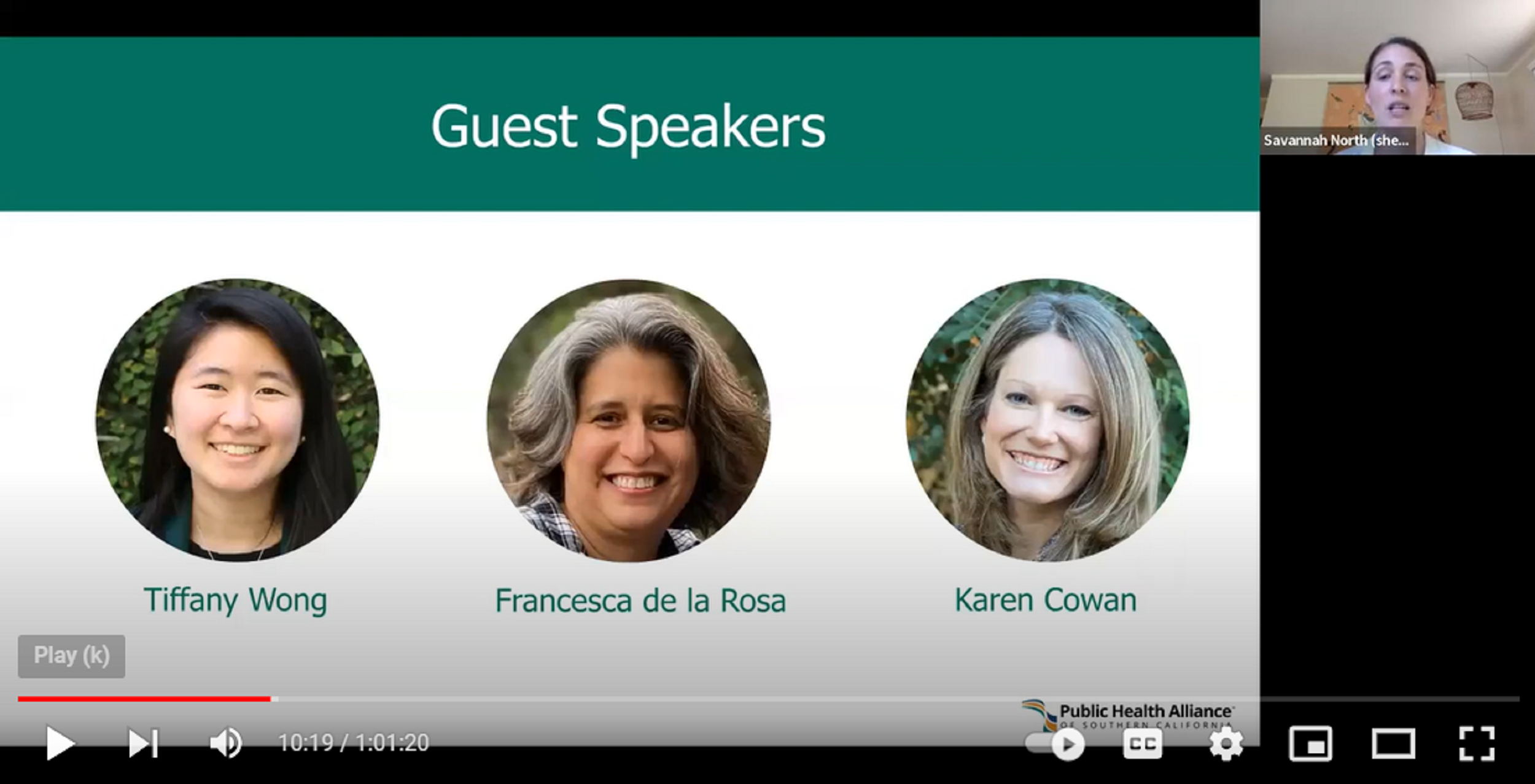
Policy Agenda: Green Infrastructure, Public Health and Equity
-
Focus Areas
Capacity Building & Leadership, Environmental Health -
Issues
Climate Change -
Expertise
Public Policy Advocacy -
Programs
Public Health Alliance of Southern California

California is increasingly suffering from climate-related burdens to health, including impaired water quality from extreme precipitation events, more frequent and intense heat waves increasing the risks of heat stroke and dehydration, and degraded air quality due to increasingly pervasive wildfires.
Whether it’s floods, fires, heat waves, or other climate disasters, the road to recovery is unequal. Vulnerable populations lack resources to adequately prepare, respond, and recover from climate impacts. Structural and systemic inequality and racism have exacerbated climate-related inequities, resulting in Black, Indigenous, and people of color (BIPOC) communities bearing the brunt of climate-driven extreme heat, flooding, poor air quality, forest fires, and natural disasters. Low-income and BIPOC communities have been denied the resources and investments needed to build community climate resilience.
Green infrastructure is an essential strategy to increase community resilience to climate change, improve public health, and invest in neighborhoods that have been harmed by disinvestment, redlining and other racist policies. Green infrastructure is rapidly becoming a preferred strategy to manage storm water, increase community access to greenspace, and improve local water and air quality. However, there are many funding, regulatory, and administrative barriers limiting the broad expansion of equitable green infrastructure implementation.
See the policy agenda
PHI’s Public Health Alliance of Southern California, with support from the Resources Legacy Fund, has developed the Green Infrastructure, Climate Resilience & Health Equity Policy Agenda to address existing barriers and present local, state and federal policy solutions to expand the use of green infrastructure across California. The agenda is also supported by the following materials:
- Cross-Agency Coordination Brief
- Funding Brief
- Policy and Regulations Brief
- Data Brief
- Green Infrastructure & Health Equity Brief
There is substantial evidence that Green Infrastructure (GI) not only improves water quality, reduces carbon emissions, and protects communities from the impacts of climate change. GI should incorporate parks, trails, and green spaces as a public health equity strategy to improve physical and mental health. Tree canopy, green roofs, and permeable pavements can lessen the impact of heatwaves and the urban heat island effect. Green streets and parks can reduce not only stormwater runoff but also improve air quality and integrate active commuting and recreation to improve health.
As California increases investments in infrastructure to address climate change and promote community resilience, it is essential that GI is prioritized as a critical strategy to promote public health, environmental justice, and equity.
Guiding Principles of the Policy Agenda
- Center Community-led, Equitable, Place-Based Strategies: GI should be used as part of health in all policies approach to decrease race and income-based health and opportunity inequities. Community and equity led strategies generate community buy-in and maximize benefits by meeting the unique place-based needs to help residents thrive.
- Improve Community Health Outcomes and Equity: A foundational element of GI-related strategies must be to improve community health and promote health equity. Increased climate resilience, improved air and water quality, and access to green and open spaces are among the strategies that should be centered on improving health outcomes among all community members.
- Elevate Multi-Benefit Over Narrow Benefit Approaches: Traditional gray infrastructure serves a single purpose, to move stormwater from one location to another, prioritizing GI provides an opportunity to serve many purposes and elevate numerous benefits, including climate mitigation and resilience, parks access, educational outcomes, green streets, opportunities for physical activity, among others.
- Minimize Possible Urban Ecosystem Disservices: While GI does have numerous benefits to communities and urban ecosystems, disservices are also possible. Community and equity-centered strategies should integrate strategies to minimize disservices such as ecosystem disturbances, allergic reactions, and habitat competition that can be associated with certain GI approaches.
- Emphasize Long-Term Sustainability: GI often requires less upfront capital investments than gray infrastructure. However, GI often requires additional resources and time for long-term maintenance. Using a long-term planning approach is necessary for the success of GI, and should be coordinated with local workforce development programs, building high-road, family-sustaining careers.
- Ground Green Infrastructure in Data-Driven Strategies: Data-driven strategies are required to plan, benchmark, and assess the success of GI. A growing body of research should be utilized and developed to maximize the community benefit of GI.
Webinar Recording: Green Infrastructure, Public Health & Equity Policy Opportunities
In June 2022, PHI’s Public Health Alliance of Southern California hosted a webinar on the Green Infrastructure, Public Health and Equity Policy Agenda, and discussed how the proposed policies and recommendations can be applied in different fields. Watch the recording and see related materials:
Originally published by Public Health Alliance of Southern California
Work With Us
You change the world. We do the rest. Explore fiscal sponsorship at PHI.
Support Us
Together, we can accelerate our response to public health’s most critical issues.
Find Employment
Begin your career at the Public Health Institute.



